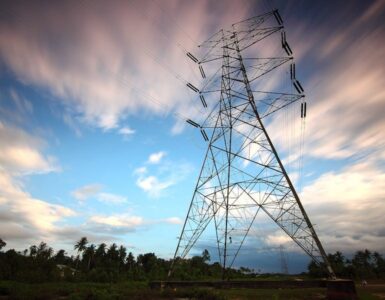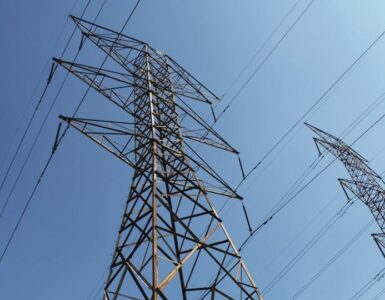I am writing to provide you with another COVID19 update. So far, 2.1 million Americans have been infected, and around 120,000 have died, despite the fact that only a minority of our population has been exposed. To put this in perspective, more Americans have died from COVID19 than every war since 1950 combined, and we have the highest death toll in the world.
With my last update dated May 4, I wrote that “daily cases and deaths remain steady” and that “We seem to be on the verge of a downward trend, but only time will tell.”
On May 15, the Arizona stay at home order was allowed to expire, and though many of us have continued to stay at home, socially distance, and assiduously wear masks, we have witnessed large social gatherings, lack of masks in many public places, and general increase in non-distanced activity.
Many of us in medicine and public health have been worried that this would lead to an increase in caseload after about 1-2 weeks, and indeed, that has come to pass. Compared to our daily caseload in the 300-400 range in early May, we are now seeing about 1500 new cases per day. Arizona has received national and international press because our numbers are so concerning. According to rtlive.com, Arizona currently has the highest rate of COVID19 spread in the country.
Why are these numbers concerning?
First, they indicate that the virus is spreading rapidly. Some may ask whether the increased case counts simply reflect an increase in testing. After all, if we test more, we would expect to find more cases. But if increased testing were the only explanation, the percent of positive tests would also decrease. In Arizona, the percent of positive tests has actually increased, which is an ominous finding. The virus really appears to be on a tear through our state.
Second, our biggest concern must remain the ability to provide optimal medical care to anyone who needs it, especially critical care. This includes not only COVID19 patients, but also anyone who is very sick with a heart attack, stroke, traumatic injury, or other serious condition. Over the past week, we heard that two of our major hospital chains were nearing ICU bed capacity. Per the DHS website, we have about 20% of our ICU beds available, or 350 in total. The hospitals can indeed increase capacity beyond this level and are making plans to do so. We also have other hospitals such as Phoenix St. Luke’s here in my district on standby as necessary.
I am currently working with a modeling team at a major university to determine whether we will exhaust our resources and if so, at what time. I hope that a better understanding will guide our public policy decisions.
But the risk here is significant. The COVID19 virus spreads in an exponential way, meaning that in the next two weeks, we could see much higher case counts. That could overwhelm our medical system, and we would then see unnecessary death in Arizona. The decisions we make right now affect our experience two weeks from now.
What can we do about it?
Looking at the evidence that has emerged over the last few months, we can learn a few important lessons. We have several public policy options that would avoid another shutdown and taken together, would significantly slow the virus and protect health care capacity.
First, the best available science now strongly suggests that widespread use of masks reduces community spread. This refers to surgical masks or any cloth covering of the mouth and nose (not N95 masks which are designed to protect health care workers). Masks may not protect the wearer, but rather protect everyone around the wearer. Masks are not a perfect solution, but they do make a significant difference, especially when we consider the millions of interactions across society every day. Short-term use of cloth or surgical masks is also very safe and not associated with adverse medical outcomes.
Second, we have learned that spread is far more likely indoors than outdoors. Taking these two points together, if all members of the public wore masks indoors, we would see a significant decrease in transmission. Other countries have had positive experiences with such mask policies.
Third, physical distancing has also been shown to decrease transmission. All of us must take great care to maintain distance in public. Businesses should limit indoor customers. Restaurants should not seat people close together. Hygiene and disinfection procedures should be through and routine. We must continue to avoid crowds and large gatherings.
Fourth, age continues to be the top risk factor for death, and so targeted strategies to protect seniors are crucial. Along with many stakeholders, I am personally working on a package of common-sense initiatives to protect those in facilities such as assisted living, nursing homes, etc. We hope to have these initiatives fully developed soon in case the legislature returns for a special session.
Fifth, some have asked about the possibility of another stay-at-home order. Personally, I hope we do not ever see another shutdown, because the economic effects are devastating, especially to people in certain industries and those with lower income levels. But if the medical system approaches catastrophe, I believe that it should remain an option of last resort.
Finally, many of you have also asked about children’s safety. The national press has reported on a COVID19-related illness termed Pediatric Multisystem Inflammatory Syndrome (PMIS) that resembles Kawasaki’s disease. The CDC has issued a call to physicians to be watchful. This illness still appears to be VERY rare and only based on a case-series. Until more data become available, I believe that most children are still extremely safe with regard to COVID19 risk.
The way forward
In comparison to the last three months, the way forward is more uncertain and we have no easy or ideal societal response. We have learned a lot and prepared much during the lockdown. We had flattened the curve considerably. But unfortunately, Arizona’s numbers are now rising fast, and our ICU bed availability is somewhat low.
Unlike many of the political debates of our time, this situation does not lend itself to sound bites, slogans and rhetoric. Our discussion should be thoughtful, science-based, empathetic and nuanced rather than cavalier or driven by ideology or fear.
As a public health professional, I ask you to imagine you are in a grocery store and someone’s beloved grandmother is nearby. For the safety of your neighbors, friends and fellow Americans, please wear a mask so you do not accidentally give them a deadly disease. Please stay at least six feet away from others in all settings, but especially indoors. Let’s work together to provide protection to our most vulnerable groups.
If you are a senior or in a vulnerable group, please try to stay home and avoid other people as much as possible. Younger people should realize that by spreading the virus, they increase prevalence and that puts others at risk by direct infection and also by consuming hospital capacity.
Thank you again for all of your consideration and your courage through these difficult times. Though it seems as though the social fabric of our country stretches thin, I believe that our national discourse has helped us see and understand ourselves more clearly, make us stronger, and continually make us a more perfect union.
Dr. Amish Shah is a state legislator and an emergency medical physician in Phoenix, Arizona.
















Add comment